Guest Post by Jordi Ordóñez
 Photo by Charles Deluvio
Photo by Charles Deluvio
Coronavirus is a global phenomenon that has affected every business on the planet.
Many people have switched to online shopping due to quarantine restrictions all over the world. And those that were shopping for almost everything on Amazon, are now shopping for everything on the everything store.
Amazon has felt the impact of crisis too, not just on their manpower, but also in their marketplaces in Europe, the United States, and India.
Amazon India resumed services to select cities on March 30th.
In the US and Europe, FBA sellers can only refill their inventory if they are sending essential goods in Baby Products, Health & Household, Beauty & Personal Care, Grocery, Industrial & Scientific, and Pet Supplies.
Brick-and-mortar retail is closed for an indefinite amount of time.
With global consumers spending more time at home and a fear of going out to buy from shops that are still open – grocery and convenience stores, pharmacies, and select general merchandise stores – it's time to make a real bet on the online channel.
We have to focus on eCommerce, both in our stores and marketplaces. Amazon is still running at (almost) full capacity and, as its logistical capacity is holding up much better than anyone else's, it is logical to prioritize our strategy on Jeff Bezos' platform.
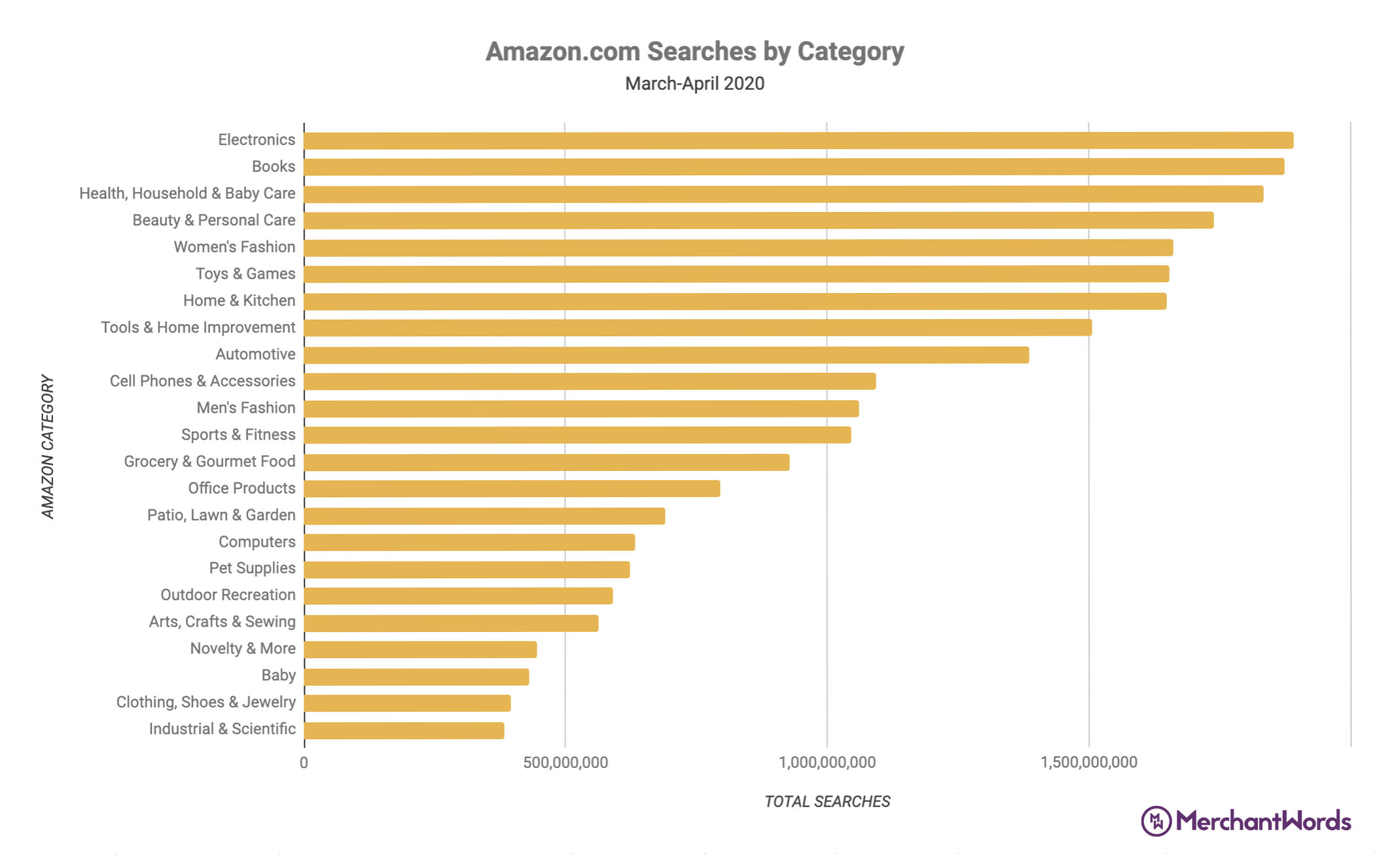
6 Strategies to Help Your Business Continue Growing on Amazon During COVID-19
Here are six strategic tips, some of them are more aggressive than others, aimed at maintaining your presence on Amazon and protecting you from competitors who, at this moment, are doing their best to gain a larger market share.
#1 - The Paycheck Protection Program
This is not an Amazon policy but a policy of the US government itself.
The Paycheck Protection Program provides $349 billion in forgivable loans to help small businesses stay afloat during the COVID-19 crisis.
Small businesses and nonprofits with 500 or fewer employees can apply for loans — that includes sole proprietors and independent contractors. You can apply for these loans through the SBA website starting April 10, 2020. One loan will be granted per business, and a taxpayer identification number (TIN) is required to apply.
#2 - Changes in FBA conditions regarding stock
Amazon's current strategy is to prioritize the sale of products considered essential, and as a result, there are some really important changes for FBA sellers.
The main one is once you run out of stock on your Amazon FBA products, you will not be able to replenish them until at least until April 15th. The only way to remedy this issue is to send the orders to yourself using your courier of choice (what’s known as Fulfillment By Merchant or FBM).
As you may know, Amazon is quite strict when it comes to shipping times, so it is best to set your shipment to 3-5 days or 5-7 days in order to avoid any penalties on rates which can affect your account performance and rankings such as:
-
Order Defect Rate (ODR): 1% or lower
-
Pre-fulfillment Cancel Rate (PCR): 2.5% or lower
-
Late Shipment Rate (LSR): 4% or lower
-
Days Out Of Stock (DOOS): Should be 0
-
Level Service Agreement (LSA): Reply to any customer feedback in less than 24 hours
Long story short: avoid any shipment or customer service problems. Remember, once you’re doing FBM:
-
you can receive A-to-Z Claims which really harm your account performance
-
any late shipment rate publishes public feedback (with FBA, Amazon assumes it’s their fault and removes the feedback)
It is also important to note, that if you have a return of inventory pending, it will be indefinitely delayed because Amazon has focused all of its resources on the logistics of the products considered essential. Until this policy is changed you will not be able to retrieve your inventory, but on the positive side, at least you will not be charged the storage fee.
To give you an idea of how overworked Amazon Logistics is, since March some Prime shipments are delayed as far as a month.
#3 - Raise your campaign budget
Amazon is selling essential (and many other) goods at an impressive rate these days.
What are these essential goods? Well, they don't have a complete list and it is not very specific. The only thing we can find in their FAQ is the following:
"We continue to prioritize household staples, medical supplies, and other high-demand products coming into our fulfillment centers. We consider many factors when determining which products can be sent to our fulfillment centers, including high-demand products customers need now; current inventory levels and inventory in transit; fulfillment center capacity; and our ability to adhere to guidelines from health authorities within our fulfillment centers.”
If you have listings within these categories, it may be a good time to invest in advertising campaigns to increase your revenue. If you are already doing so, raise the budgets dedicated to those campaigns during the next few weeks.
In the case of non-essentials, we will see how these shipments are progressively slowed down, as is currently happening in Europe and the US. Take advantage of this time to gain traction and sales in other markets.
#4 - The closure of the Indian marketplace
Your strategy may be to sell in the Indian market, but as you know, Amazon (and the Indian government) has temporarily suspended selling in many cities in that country until the pandemic subsides.
In this case, you can wait until it reopens, but that means your business is closed until then. Another alternative is to evaluate other platforms that are still operating and have a significant global market share and enable you to add users that Amazon no longer captures. These marketplaces include:
-
Walmart
-
Walmart India
-
Flipkart (acquired by Walmart)
-
Snapdeal
-
Myntra
-
Alibaba (A good B2B option. China is slowly returning to daily life, so that country could be a great alternative to India.)
#5 - Don't artificially raise commodity prices
On February 25th, sellers received their first warning regarding the pricing of emergency products. The first market to receive this warning was Italy. This was the email:
“Dear Seller,
You received this message since you might be offering for sale products related to the COVID-19 (Coronavirus) emergency, such as hand sanitizers and sanitary masks.
As you will know, the alert in Italy is high. In this situation, we invite you to behave in good faith and keep customers’ trust, as well as to comply with the Business Solutions Agreement and Amazon policies, ensuring that your offers are in line with these principles.
Otherwise, we will take any appropriate action, including the removal of your offers and/or of your selling privileges in order to protect customers of our store.”
Up to a certain point, it is logical that as demand increases so will the prices of the products in highest demand (like sanitary masks or hand sanitizers). The problem comes when this price increase is abusive and made exclusively for speculative purposes to take advantage of the situation.
Some sellers were speculating and overpricing those items, so Amazon suspended 3.900 accounts during March for coronavirus-related price gouging.
Take a look at the price history for the best-selling product for “medical face masks” in the US marketplace:
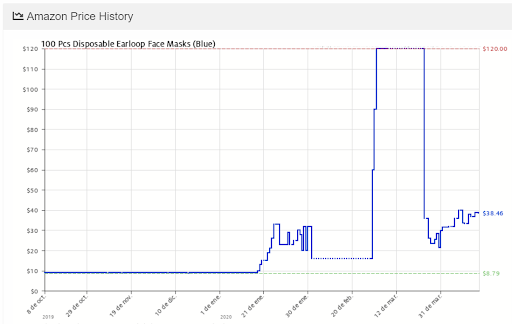
The price was raised almost 4X since February!
#6 - Review your product listings
In this new scenario, we can easily see how shopper searches are actively changing. Just take a look at what Amazon’s A9 search algorithm suggests for “face masks” in Spain:
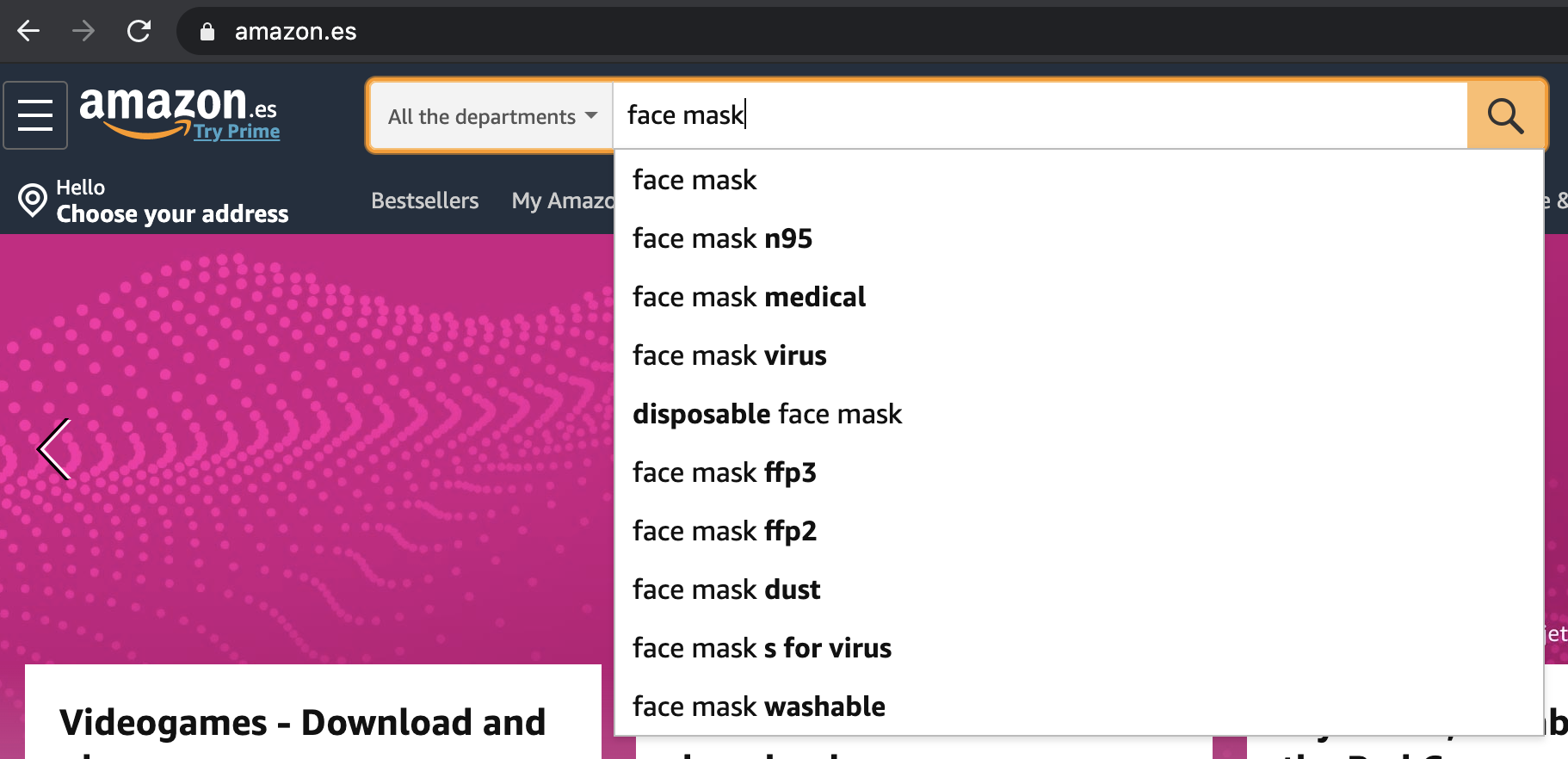
And in searches for "face mask" in the US:
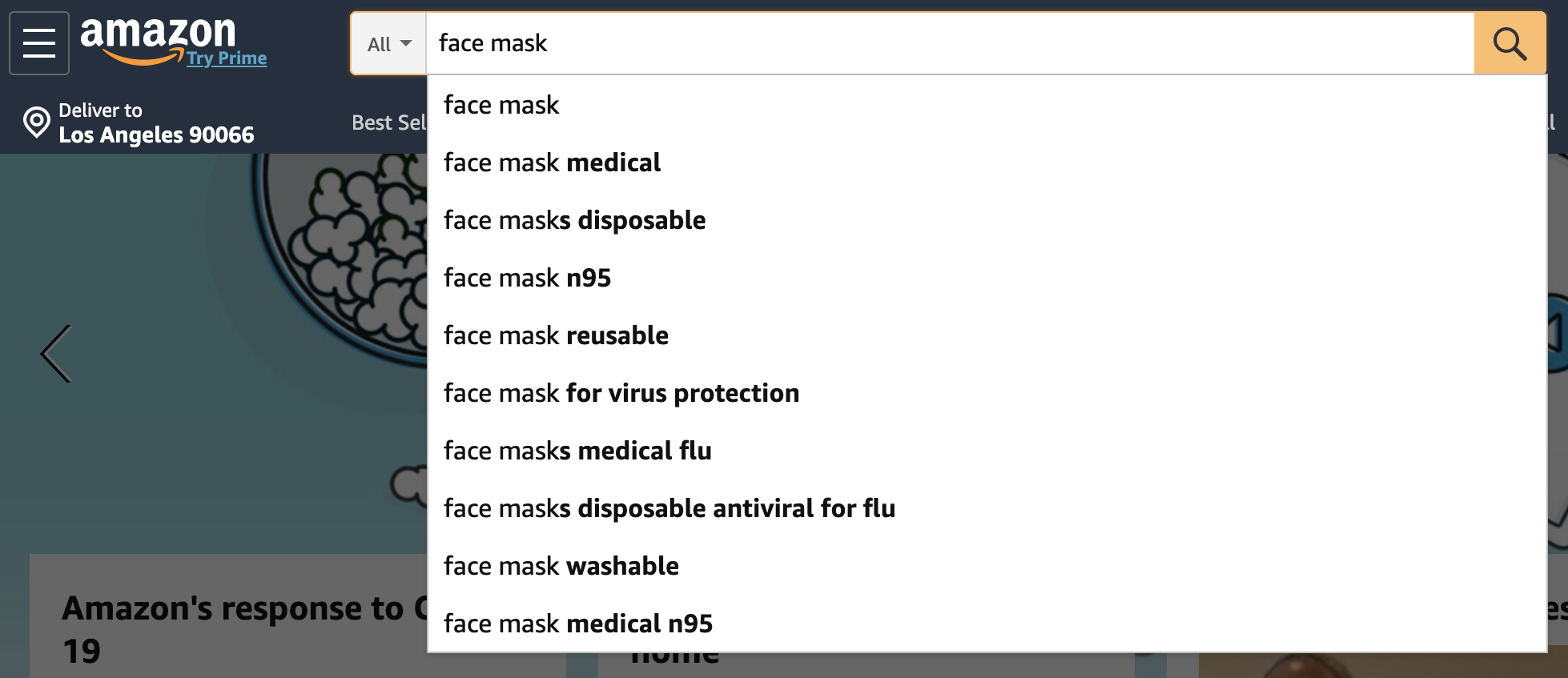
To meet this growing and evolving demand, review your product detail pages and PPC campaigns to see if they require new keywords. You can do this manually in the Amazon search bar or use Amazon data software like MerchantWords to see the trend and volumes of searches for 11 Amazon marketplaces.
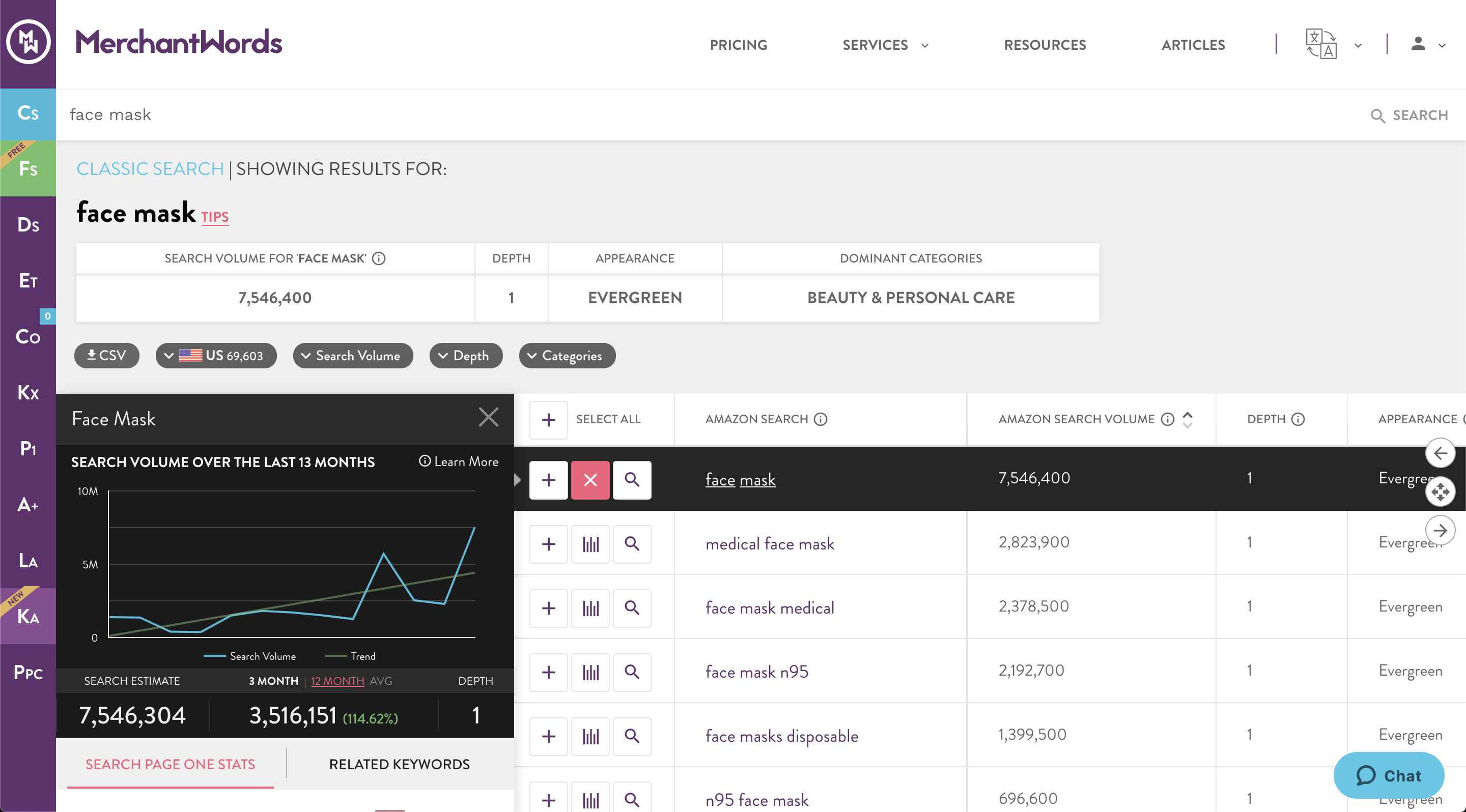
Make sure your product listing is as complete as possible. Incorporate new, relevant search terms to the product title, feature bullet points (highlighting the key advantages for users), and the description of the product itself.
Additionally, you can use these keywords to optimize your PPC campaigns by bidding on trending words. This will boost conversion in the short term and help to gain momentum thanks to organic positioning.
I hope these six strategies help move your business forward on Amazon during these challenging times. Most importantly remember to take care of yourself first.
Stay healthy and safe.
About the Contributor
Jordi Ordonez is an Amazon an eCommerce consultant based in Barcelona, Spain. He has been involved in e-commerce and digital marketing since 2000, working with clients such as Nike, Volkswagen, Audi, and Intersport. Jordi currently manages an Amazon Seller tools directory and blog at https://jordiob.com.
|
Get the latest Amazon news and insights by visiting the MerchantWords blog. DISCOVER, OPTIMIZE, AND GROW YOUR BUSINESS WITH MERCHANTWORDS. |

